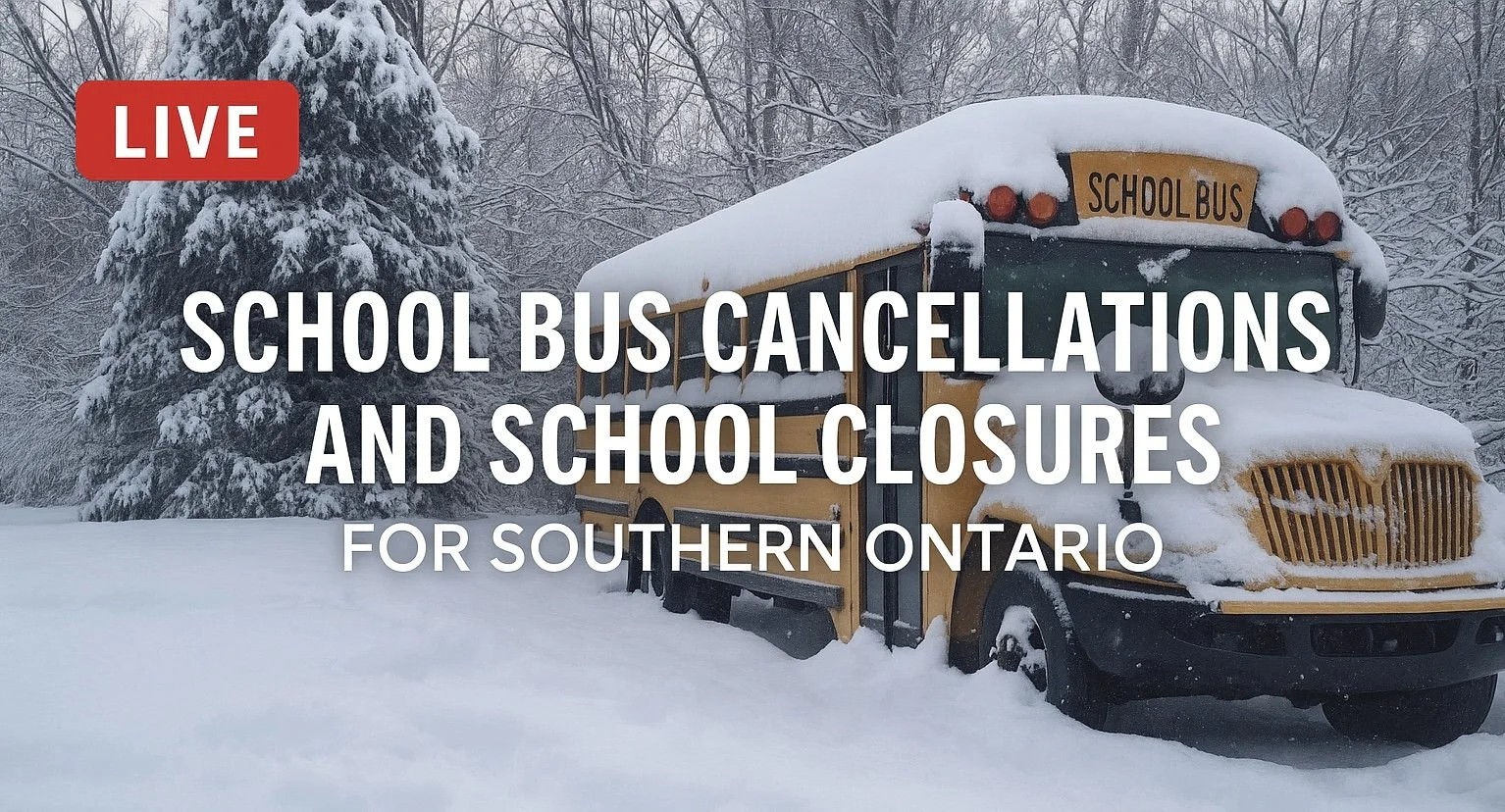Mid-Week Squalls Could Dump Up to 25-50cm of Snow to Parts of Southwestern Ontario by Thursday
/The New Year has certainly started on a frigid note across Ontario, as Arctic air has firmly settled over the region in recent days. These cold temperatures, combined with open lakes, have created the perfect conditions for lake-effect snow. Late last week and into the weekend, parts of the province experienced significant snowfall, with totals southeast of Georgian Bay reaching or exceeding 50 cm.
Over the past 24 hours, the lake-effect machine has largely taken a break, aside from some minor activity south of Lake Huron and Georgian Bay. However, that respite will be short-lived. Beginning Tuesday evening, snow squalls are expected to return with a vengeance as wind directions realign and even colder air moves into the region. These squalls are anticipated to persist through Wednesday and into early Thursday before tapering off.
This round of lake-effect snow will likely target areas that were largely spared during the last event. The focus this time will be on regions southeast of Lake Huron and along the southern shoreline of Georgian Bay. Some of the hardest-hit areas could include London and Collingwood, with snowfall totals potentially ranging from 25 to 50 cm over the next 48 hours.
HOURLY SNOWFALL RATE/intensity - MAP FROM WEATHERBELL
As for the timing, models differ slightly on the intensity and precise placement of the squalls. The latest data suggests snow squalls could begin organizing as early as Tuesday evening. The squall off Georgian Bay is expected to impact the Collingwood and Blue Mountain area, stretching inland toward Creemore, Alliston, and Shelburne. It may also affect the Highway 400 corridor just south of Barrie.
Meanwhile, activity off Lake Huron could produce multiple squalls developing between Kincardine and Grand Bend, with bands extending inland in a southeasterly direction. This puts portions of Huron, Perth, and Middlesex counties in the crosshairs.
The Georgian Bay squall appears to be somewhat weaker than its Lake Huron counterpart, likely due to the smaller lake surface area supplying moisture. That said, it is expected to remain relatively stationary through the overnight hours into Wednesday, resulting in steady snowfall accumulation and reduced visibility.
Travel in this area will likely be challenging from Tuesday night into Wednesday, with little improvement expected until the activity begins to subside overnight.
HOURLY SNOWFALL RATE/intensity - MAP FROM WEATHERBELL
Lake Huron squalls, on the other hand, are expected to shift around more frequently, spreading out snowfall accumulations. By Wednesday morning, the primary squall is forecasted to come ashore around Grand Bend, extending inland toward Lucan, Strathroy, and London.
There is still some uncertainty about whether the squall will directly impact the City of London or remain just northwest. Western parts of the city are likely to see the heaviest snowfall, while eastern areas may receive lighter accumulations.
Scattered snow squalls east of Lake Huron are expected to continue affecting Huron and Perth counties throughout Wednesday. These squalls may vary in intensity, and if one becomes particularly organized and stalls over an area, rapid snowfall accumulation could occur.
The most intense conditions are expected during the day on Wednesday, extending into the evening and overnight hours.
HOURLY SNOWFALL RATE/intensity - MAP FROM WEATHERBELL
By midnight, the lake-effect activity is expected to become more localized. The Georgian Bay squall will likely retreat closer to the shoreline, while the Lake Huron squalls may consolidate into a narrower band near Grand Bend, extending into the London area.
While this will reduce the overall impact, areas caught under these more focused squalls could experience increased snowfall rates for several hours overnight into early Thursday morning.
By pre-dawn Thursday, the lake-effect activity is anticipated to taper off, with the Georgian Bay squall dissipating before sunrise and the Lake Huron squall following a few hours later.
Snowfall totals from this round of snow squalls will vary widely, as is typical with these events. This forecast is particularly tricky due to discrepancies in model data regarding the intensity of the snow bands, which will significantly affect accumulation.
Based on the current environment and dynamics, there is potential for 25 to 50 cm of snow in areas such as London, Lucan, Grand Bend, Clinton, and Collingwood. However, these totals are not guaranteed, as exact amounts will depend on where the bands set up.
For London, in particular, snowfall accumulations will likely be heavier in the northwest, while eastern areas may only see totals between 10 and 25 cm.
Surrounding areas like Goderich, Point Clark, Mitchell, Strathroy, and St. Thomas could see localized accumulations of 15 to 25 cm, depending on the positioning of the bands. Similarly, areas southwest of Barrie, including Angus, Alliston, and Beeton, may receive 10 to 20 cm as the Georgian Bay squall extends inland.
Outside these regions, significant snowfall is not expected due to the highly localized nature of lake-effect activity. However, portions of Eastern Ontario near the U.S. border and areas east of Ottawa may see 5 to 10 cm of accumulation on Wednesday due to a separate system lingering over Quebec.










